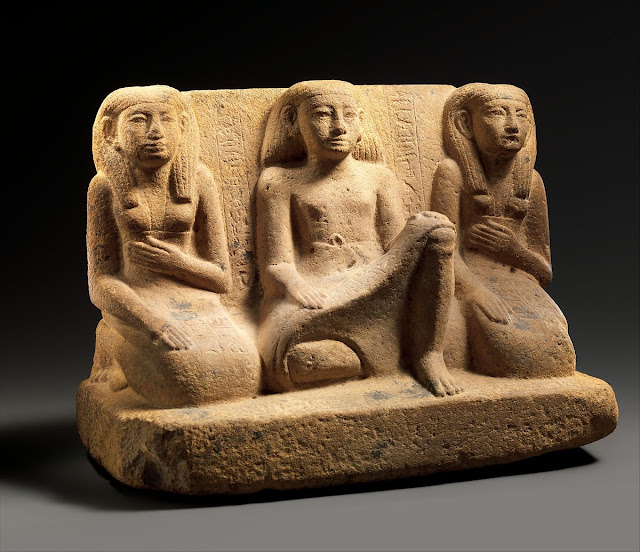This elegant triple lamp is delicately carved, incised, and polished from one block of alabaster.
The central cup is shaped like a lotus chalice, rising on a long stem, and is flanked by two smaller bud-like cups on sinuous stems, each with a leaf spreading out horizontally as if they were floating on the surface of the water.
The cups would once have contained wicks floating on oil, traces of which was preserved inside.
From the Tomb of Tutankhamun (KV62), Valley of the Kings, West Thebes. Now in the Egyptian Museum, Cairo.

































